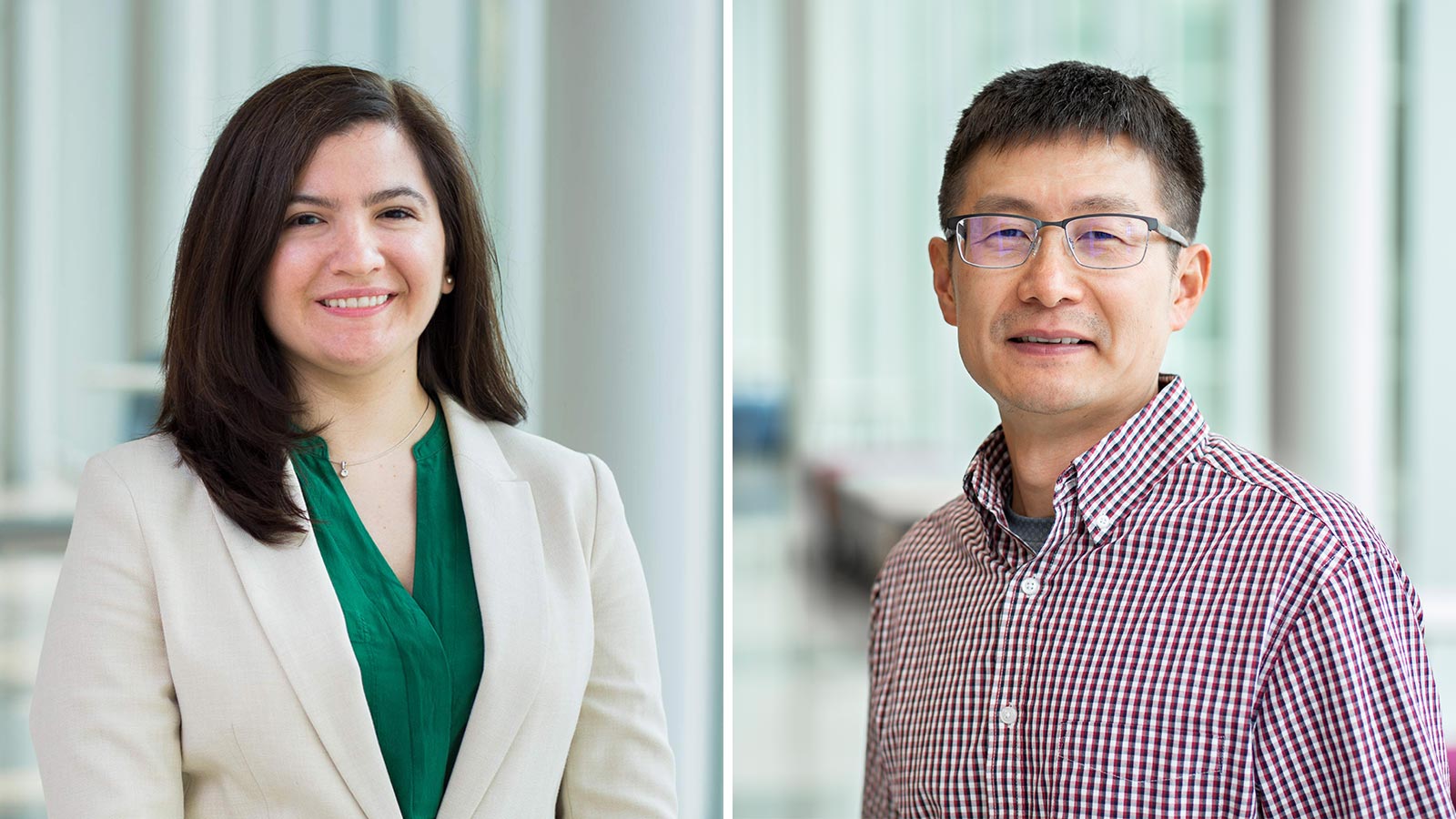USU Leads in Nuclear Engineering Research
Sept. 15, 2021 — Researchers from Utah State University’s Department of Mechanical and Aerospace Engineering are advancing the future of nuclear power. This summer, two researchers each received an $800,000 grant from the Department of Energy’s Nuclear Energy University Program.

USU mechanical and aerospace engineering professors Nadia Kouraytem and Hailei Wang are working to advance the future of nuclear power with two new research projects. (Matt Jensen/USU)
Nadia Kouraytem will lead a study exploring the use of additively manufactured metals — or 3D printed materials — in producing nuclear reactor components. Using printed materials rather than traditional manufacturing methods can reduce production time, cost and waste. However, the process-structure-property relationships of these printed metals is not fully understood.
The biggest challenge in 3D printing reactor materials is ensuring they are structurally sound. When using a 3D printer, there are a variety of adjustments that can be made to the processing parameters. According to Kouraytem, any adjustment made will result in a different underlying microstructure and a different underlying defect structure which in turn will affect the material’s properties.
Kouraytem’s research will explore the effect various processing parameters have on the properties of 3D-printed materials. Material properties of interest include creep, or deformation of materials due to extreme temperatures and loading. Collaborators include MAE faculty Ryan Berke.
Hailei Wang is the lead investigator on a study aimed at more economically integrating nuclear and renewable energy sources, such as wind and solar. Wang said because renewables are intermittent, they have fundamental limitations as stand-alone clean energy sources. Nuclear fuel can provide a clean, consistent power source which is critical to the U.S. being carbon-free by 2035. Collaborators include MAE’s Matthew Harris.
Although the idea of integrating nuclear energy with other renewable energy sources like wind and solar is not new, this study will specifically explore the benefits and challenges of integrating advanced nuclear reactor designs, like the Natrium plant created by TerraPower and GE Hitachi.
Given large design variables for integrated energy systems like this, Wang said the goal of his research is to further optimize the current Natrium design while exploring other innovations for integrated energy systems. Advancements from the research will mean energy systems are more energy-efficient and cost-effective, leading to rapid and large-scale deployment.
As part of the research, industry consultants from GE Hitachi and TerraPower will provide feedback to help ensure the design innovations are feasible for commercial purposes.
###
Writer: Matilyn Mortensen, 435-797-7512, matilyn.mortensen@usu.edu
Contacts:
Dr. Nadia Kouraytem, 435-797-6364, nadia.kouraytem@usu.edu
Dr. Haiei Wang, 435-797-2098, hailei.wang@usu.edu

